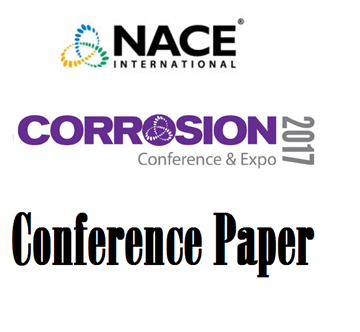Search
Products tagged with 'stainless steel'
View as
Sort by
Display
per page
Corrosion Performance of Candidate Constructional Steels under Batch-mode Hydrothermal Liquefaction (HTL) Conditions
Product Number:
51320-15484-SG
Publication Date:
2020
$20.00
Corrosion Rates Of Stainless Steel And Low Alloy Steels In Harsh And Corrosive Environments For Subsea Application
Product Number:
51321-16849-SG
Publication Date:
2021
$20.00
Corrosion Resistance Evaluation Of Super Duplex Stainless Steel In Supercritical CO2 Saturated Liquid Phase Containing Impurities O2 Or SO2
Product Number:
51322-17602-SG
Publication Date:
2022
$20.00
Corrosion Resistance of Duplex Stainless Steels for CCS Application under the Liquid Phase in Equilibrium with Supercritical CO2 Containing Slight Amount of O2
Product Number:
51324-20598-SG
Publication Date:
2024
$40.00
Corrosion Resistance Of Stainless Steels And Nickel Alloys In Natural Seawater
Product Number:
51321-16515-SG
Publication Date:
2021
$20.00
Crevice Corrosion of Stainless Steel in Tropical Seas
Product Number:
51317--9327-SG
ISBN:
9327 2017 CP
Publication Date:
2017
$20.00
Deadleg Stress Corrosion Cracking Risks in SS Piping Systems in Refining and Renewable Units
Product Number:
51324-20816-SG
Publication Date:
2024
$40.00
Destructive Examination Protocol for 3013-Container-Package Storing Plutonium-Bearing Materials
Product Number:
51324-20811-SG
Publication Date:
2024
$40.00
Effect of Backing Gas Composition on Corrosion Behavior of Conventional Duplex Stainless Steel Weldments
Product Number:
51321-16598-SG
Publication Date:
2021
$20.00
Effect Of Dissolved Oxygen On The SCC Susceptibility And Oxidation Of Cold-Worked 316L SS In PWR Primary Water
Product Number:
ED22-17254-SG
Publication Date:
2022
$20.00
Effect of Operating Parameters on the Corrosion of Candidate Heat Exchanger Alloys in Advanced Thermal Power Plants
Product Number:
51324-21229-SG
Publication Date:
2024
$40.00
Efficiency of Cathodic Protection of Stainless Steel in Confined Area - Further Understanding of the Protection Mechanism through Experimental Testing and Modeling
Product Number:
51324-20639-SG
Publication Date:
2024
$40.00












